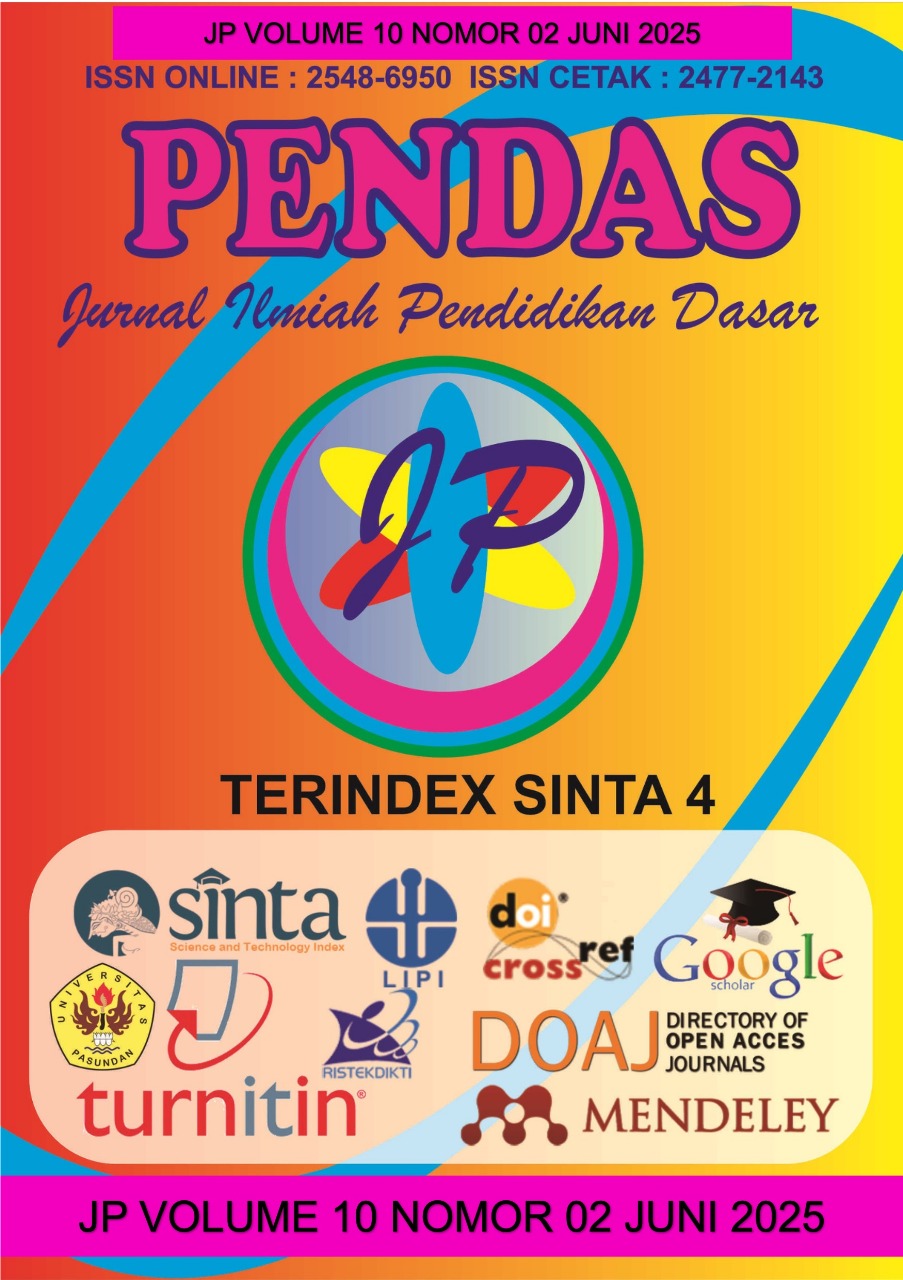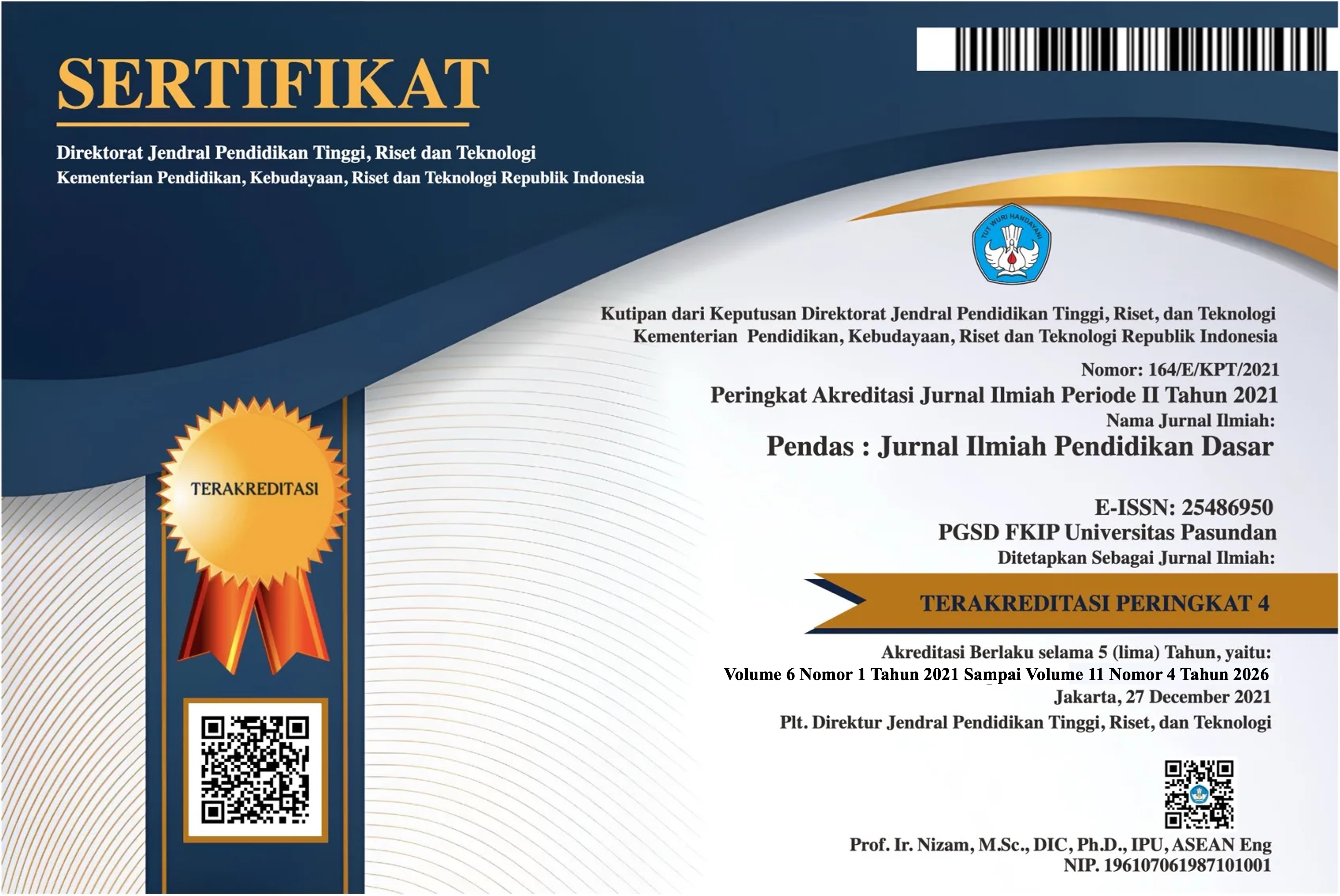PENGEMBANGAN SISTEM EVALUASI OTOMATIS DALAM E-LEARNING MENGGUNAKAN MACHINE LEARNING
DOI:
https://doi.org/10.23969/jp.v10i2.27249Keywords:
e-learning, automatic evaluation, machine learning, digital education random forest, essay questionsAbstract
The advancement of information and communication technology has significantly transformed the education landscape, particularly through the implementation of e-learning systems that enable flexible, remote learning. However, a major challenge persists in evaluating students’ essay-type answers, which are still predominantly assessed manually by lecturers. This manual process is time-consuming, subjective, and inefficient. To address this issue, this study aims to develop an automated evaluation system for essay assessments using machine learning techniques. This research adopts a Research and Development (R&D) methodology, involving several stages including problem identification, data collection, system design, validation, testing, and refinement. The system was built using web-based technology and implemented supervised machine learning algorithms, particularly Random Forest and Naive Bayes, trained with previously assessed student answers. The evaluation focused on the system's accuracy compared to manual grading. The results indicate that the Random Forest algorithm achieved the highest accuracy rate of 88%, with strong precision and recall scores, suggesting a high level of consistency with lecturers’ assessments. A functionality test involving 25 students and 10 lecturers showed positive user responses regarding the system's ease of use, speed, and perceived usefulness in the learning process. This research demonstrates the potential of automated essay scoring to improve efficiency and objectivity in e-learning environments. While limitations remain, particularly in assessing complex logical reasoning and cultural context, the system lays a strong foundation for future integration with NLP models and Learning Management Systems (LMS). The findings contribute to the development of more modern, responsive, and scalable educational technologies.
Downloads
References
Puspita, Ayu, Indah Sari, Hastari Mayrita, Dosen Universitas, and Bina Darma. 2020. “VARIASI PEMBELAJARAN BAHASA INDONESIA MAHASISWA UNIVERSITAS BINA DARMA DI MASA PANDEMI.” 13(2):66–75.
Rosmiati, Mia. 2019. “Animasi Interaktif Sebagai Media Pembelajaran Bahasa Inggris Menggunakan Metode ADDIE.” Paradigma - Jurnal Komputer Dan Informatika 21(2):261–68. doi: 10.31294/p.v21i2.6019.
Rosyidi, Dedi. 2020. “Teknik Dan Instrumen Asesmen Ranah Kognitif.” 2(April):1–13.
Sinaga, Novica Handayani, Deci Irmayani, and Mila Nirmala Sari Hasibuan. 2024. “Mengoptimalkan Keamanan Jaringan: Memanfaatkan Kecerdasan Buatan Untuk Meningkatkan Deteksi Dan Respon Ancaman.” Jurnal Ilmu Komputer Dan Sistem Informasi (JIKOMSI 7 Nomor 2(September):364–69.
Waruwu, Lestari, Anggi Mesrawati Zebua, Florida Kristiani Lase, and Orina Harefa. 2024. “Evaluasi Penggunaan Teknologi Informasi Dalam Pembelajaran Di SMK: Tantangan, Peluang Dan Solusi.” Journal of Education Research 5(3):3790–99. doi: 10.37985/jer.v5i3.1328.
Ahmad, R. (2021). E-learning Automated Essay Scoring System Menggunakan Metode Searching Text Similarity Matching Text. 22(1), 38–43. https://doi.org/10.25042/jpe.052018.07
Anas, I., & Zakir, S. (2024). Artificial Intelligence: Solusi Pembelajaran Era Digital 5.0. Jurnal Sains Komputer & Informatika (J-SAKTI, 8(1), 35–46.
Bahri, S., Studi, P., & Informasi, S. (2015). PENILAIAN OTOMATIS UJIAN ESSAY ONLINE BERBASIS. I(1), 62–69.
Herwinsyah, H., Tinggi, S., Islam, A., & Yogyakarta, T. (2025). E-LEARNING. August 2023.
Junaedy, A., Huraerah, A., Abdullah, A. W., & Rivai, A. (2021). Pengaruh Teknologi Informasi Dan Komunikasi Terhadap Pendidikan Indonesia. Jurnal Penelitian Dan Kajian Sosial Keagamaan, 18, 133–146. https://dx.doi.org/10.31958/jaf.v11i2.10548
Lahitani, A. R. (2022). Automated Essay Scoring menggunakan Cosine Similarity pada Penilaian Esai Multi Soal. 22(2), 107–118.
Perbandingan, A., & Dan, T. W. (2025). A COMPARATIVE ANALYSIS OF WORD2VEC AND DOC2VEC TECHNIQUES IN. 12(1), 133–144. https://doi.org/10.25126/jtiik.2025129143
Purnama, R. E. (2020). SISTEM PENILAIAN ESAI OTOMATIS MENGGUNAKAN NATURAL LANGUAGE PROCESSING DAN K-MEANS.
Restu Ningsih, S., Indonesia Padang, S., & Khatib Sulaiman Dalam No, J. (2021). Implementasi E-Learning Sebagai Media Pembelajaran Online Bagi Siswa Sekolah Menengah Kejuruan (Smk). JOISIE Journal Of Information System And Informatics Engineering, 5(1), 20–28.
Sihombing, D. O. (2022). Implementasi Natural Language Processing ( NLP ) dan Algoritma Cosine Similarity dalam Penilaian Ujian Esai Otomatis. 4, 396–406. https://doi.org/10.30865/json.v4i2.5374
Sutrisno, A. B., & Syukur, S. W. (2023). Tantangan Pembelajaran Daring di Masa Pandemi COVID-19: Analisis Esai Mahasiswa Pendidikan Seni Pertunjukan. Jurnal Dieksis Id, 3(2), 112–127. https://doi.org/10.54065/dieksis.3.2.2023.345
Tu, Y., Chen, W., & Brinton, C. G. (2023). A Deep Learning Approach to Behavior-Based Learner Modeling.
Widiantoro, Albertus Dwiyoga, and S. R. (2024). PENGANTAR NLP DAN TOPIK MODEL.
Zulaiha, S. (2022). Pendekatan Contextual Teaching And Learning ( CTL ) Pendahuluan Madrasah Ibtidaiyah / Sekolah Dasar di Indonesia adalah jenjang paling. BELAJEA: Jurnal Pendidikan Islam, 1(01), 41–60.
Downloads
Published
Issue
Section
License
Copyright (c) 2025 Pendas : Jurnal Ilmiah Pendidikan Dasar

This work is licensed under a Creative Commons Attribution 4.0 International License.



















